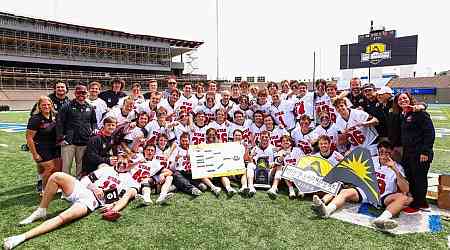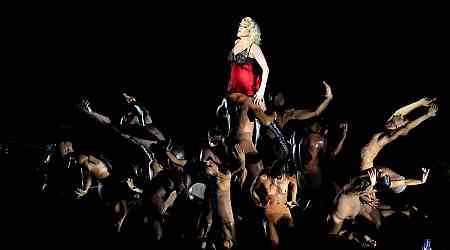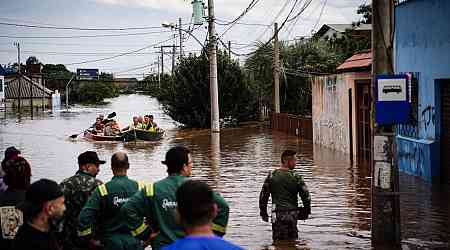It seems like someone is shooting off into space every day. Lest we forget, these endeavors stand on the shoulders of the trailblazing men and women who came before — explorers who charted new journeys by putting one foot in front of the other right here on planet Earth.
Wacky, brave and oftentimes stubborn, the six American adventurers profiled in today’s Best of OZY let their passion for parts unknown run wild. From a legendary Black pioneer to the first woman to reach the peak of the tallest mountain in North America to today’s underwater mavens, let us take you on an inspiring journey of wild discovery.
— Based on reporting by Josefina Salomon
go west

1 - Ahead of His Time
In 19th century America, slavery was a tragic reality for half of the country. James Beckwourth stood out from the crowd. A Black man born into slavery in Virginia at the dawn of the 1800s, he was an unlikely pioneer, even at a time when westbound exploration was the order of the day . Everyone from government topographers and fur traders to missionaries imposing their beliefs onto Indigenous communities headed across the Mississippi River toward the Midwest. Beckwourth himself reached California by the end of the century. These myriad adventurers were something akin to today’s astronauts. It’s no wonder that this period coincided with the great transport revolution . America was changing at a dizzying speed.
2 - Stamina and Charisma
Legend has it that in 1824, a young Beckwourth joined a fur-trapping company in a wild expedition across the Rocky Mountains in present-day Colorado. The rough terrain and high elevations were no place for the inexperienced, but what Beckwourth lacked in technical ability — at least initially — he made up for in charisma. He forged a reputation as a master storyteller and loved talking about his adventures. Not only did he quickly learn how to survive in the wild by tracking and killing animals , but during his travels, he also made inroads with the Crow Nation . Beckwourth became so close to them that in the late 1820s he married at least two tribal women and fathered several children . And that’s not all. Having developed a bevy of mountaineering skills, in 1851 he discovered a safe route across the Sierra Nevada Mountains in Northern California. At more than 5,000 feet above sea level, the area located in Plumas County is now called the Beckwourth Pass.
3 - A Man of Firsts
John Colter was born to an Irish family living in Virginia in the early 1770s . Blue-eyed and tall, as a young adult he had a reputation as a troublemaker but quickly became sought after for his talents as an explorer. The original “mountain man” was a skilled hunter and fur trapper . This expertise earned him a spot in the infamous Lewis and Clark expedition , which in 1804 set out to explore the lands acquired by the U.S. from France west of the Mississippi River. It was another trip that earned him a chapter in history books.
4 - The Right Turn
The Lewis and Clark adventure ended in 1806 when the team reached the Pacific Ocean . Colter, however, wanted more. A year later, the Missouri Fur Company hired him to guide it to a part of the continent known today as the state of Montana. The company’s goal was to make inroads with local Indigenous peoples and establish avenues of trade. The expedition settled at Fort Raymond near the Yellowstone River, and Colter was sent off alone on a grueling 500-mile solo trek to find said communities. What the company got instead were tales of the most magnificent landscapes, including the intense blue, yellow and green pools and craters, “steam coming from the ground” and “boiling mud.” Legend has it people did not believe him at first. It wasn’t until 1871, when the U.S. geologist Ferdinand Hayden made drawings and took pictures of the area, that people finally believed Colter’s tales. Yellowstone found itself designated the first national park , not only in the country — but the entire world.
this is a (wo)man’s world

1 - Double-Glazed Ceiling
If you think it may be hard for women to break the glass ceiling today, try being African American and Native American in the early 20th century. Bessie Coleman became the first Black woman to secure an international flying license. Her road was a rocky one. Born in Texas in 1892, one of 12 children, Coleman’s dreams usually took a back seat as she helped her mother make ends meet . Struggling (and ultimately failing) to earn enough money to pay for university, she moved to Chicago at age 23 in search of adventure. There, one of her brothers who had returned from serving in World War I teased her, saying that, unlike women in France, she would never fly a plane. Challenge accepted.
2 - The Sky Is Not the Limit
Coleman had found her calling. As a woman and an African American, she also found that no flying school in the country would accept her. So she taught herself French and moved to France to pursue her dream. Fully licensed, she returned to America in 1921 and became a sensation. Her midair tricks such as “ loop the loops ” and the figure eight gained her a following rare for any woman, let alone a woman of color. Her shows drew huge crowds, though she refused to speak publicly at any venue that discriminated against African Americans. Tragically, the pioneer died in an accident in 1926 as a passenger in a plane that had no seatbelts or roof. Since then, the Challenger Pilot’s Association of Chicago flies over her grave once a year to pay respects to the original air pioneer. Her time on earth (and in the air) was short-lived, but her legacy lives on.
3 - A 20,000-Foot-High Date
Barbara Washburn, the first woman to ever climb Alaska’s Mount Bertha back in 1941, was out of this world. Washburn wasn’t even a mountaineer. She got into climbing after meeting her husband, Bradford, at the New England Museum of Natural History in Boston in 1939. He was a keen mountaineer and invited Barbara to join him. Her lack of experience didn’t stop her. Nor did social norms at the time that screamed for her to stay at home and raise children. Fun fact: Barbara had to trek the mountain kitted out in men’s clothing because high-altitude attire for women was not available.
4 - “I Just Had to Do It”
Washburn was invited on another expedition in 1947. This time, the idea was to reach the very top of Alaska’s 20,300-foot Denali, the highest peak on the continent . Denali is most definitely not for the fainthearted. Picture what today involves an 18-day trip — and the help of detailed maps and state-of-the-art equipment — would have looked like 70 years ago. Back then known as Mount McKinley, the plan was to gather footage for a film being made to generate the public’s interest in mountain climbing. Only 15 people had succeeded in summiting before the Washburn team, and no woman had done so. “I was not trying to achieve anything. I was just there and had to do it,” Washburn said in an interview decades later. But don’t be fooled by her modesty: After completing this historic feat, Washburn and her husband went on to lead an extensive mapping project on Mount Everest and a seven-year project to chart the Grand Canyon. Her greatest achievement? Living to the age of 99 and inspiring generations of women to follow in her footsteps.
look down, deep down

1 - Into the Deep
Where do you go when most of Earth has been explored? Down, obviously. Deep down. With around 80% of the planet’s oceans yet to be explored , the potential for finding new species and ecosystems is mind-blowing. Top of the list of exciting underwater pioneers today is Robert Ballard. This retired Navy officer’s track record is packed with highlights, including the Titanic wreck . The Kansas-born oceanography professor is also one of the original deep-sea archaeologists. “We only live on less than 20% of the planet,” Ballard told NPR . “Some 28% is above the ocean. So when you really think about it, we’re living on the peaks of mountains and don’t know what’s down in the valleys.”
2 - All That Lies Beneath
What would the planet look like without its vast bodies of water? “We have better maps of Mars than of the deep ocean,” Ballard noted in a TED Talk . The son of a self-taught engineer , he caught the curiosity bug at age 17, when first setting out to explore the sea. Later, Ballard achieved fame for developing vessels that could travel at ocean depths far beyond the reaches of sunlight. Diagnosed with dyslexia as an adult, he explained how only recently he came to understand the source of his gift for exploring. “I am extremely comfortable in a world of total darkness because I see it in my mind,” he told i newspaper this month. “I just thought everyone else can do that but I’ve discovered it’s a gift and a very unique capability.”
3 - What’s Left to Find
While thousands of new animal and plant species are still discovered above water every year, life in the depths is looking even more exciting. Only recently researchers have found an alien-looking sea blob nearly 13,000 feet deep in the Caribbean Sea off the coast of Puerto Rico. And don’t forget the “ uniquely American whale ” in the Gulf of Mexico. Dr. Tracey Sutton, a professor at the Halmos College of Natural Sciences and Oceanography in Florida, believes scientists are just getting started. “Every time we go out on a deep-sea research excursion, there’s a good chance we’ll see something we’ve never seen before,” she told CBS .
4 - Finding Fish
Sutton should know. She was part of a team that found a new species of fish in the Gulf of Mexico in 2015. Inhabiting the sea at between 3,280 and 5,000 feet (the equivalent of 10 Statues of Liberty stacked on top of each other), the Lasiognathus dinema — a species of wolftrap angler — comes equipped with something resembling a fishing pole attached to its head. But that’s where the good news may end. While many 21st-century explorers are looking for undiscovered flora and fauna in the deep sea, another army of scientists is trying to keep track of all the species being lost every year (with 160 species gone in the last decade alone , they have their work cut out for them).
Sevyn Streeter on 'The Carlos Watson Show'
Sevyn Streeter shares the secrets of how she expresses herself through her music, and opens up about the R&B queens who made her who she is today. Plus: See what happens when she improvises songs about 2020, tequila, and a serenade for Carlos. To listen to the full, unedited conversation between Carlos and #SevynStreeter , subscribe to the podcast version of the show here: http://podcasts.iheartradio.




























